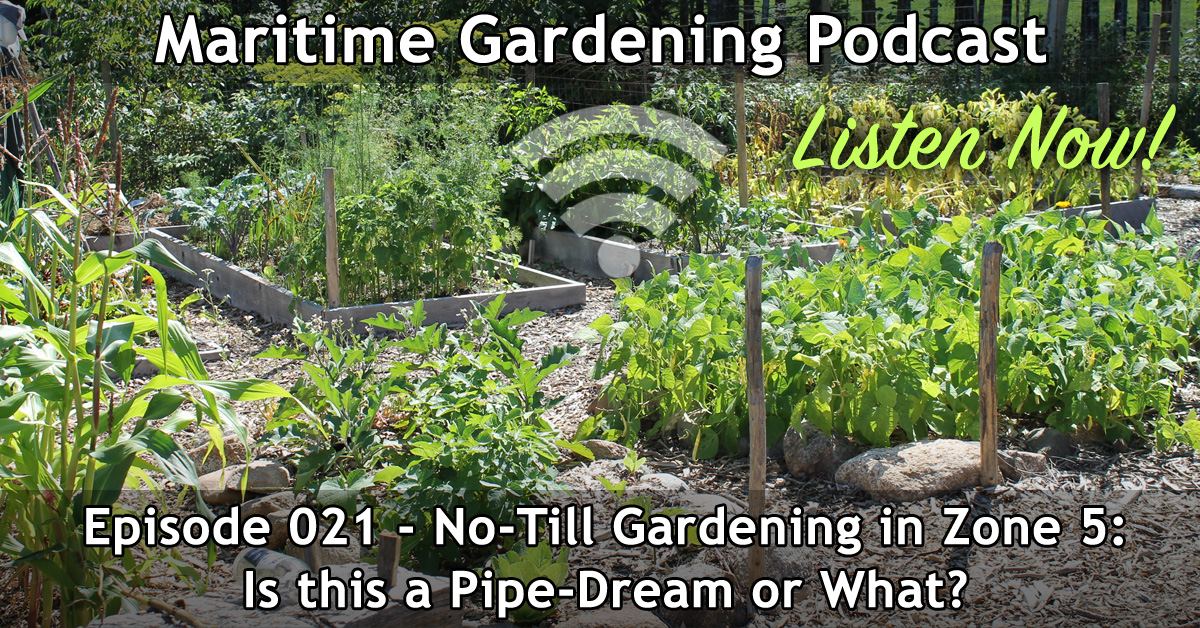Podcast: Play in new window | Download
Subscribe: RSS
Many people view fall as a time of year that symbolizes the end of the gardening season – and to some extent that is true – but it’s also the beginning of next season in many regards, and can also be a time of great activity for a gardener. Here’s a list of things to consider as we move into the colder months.
Building New Beds
As we discussed last week, fall is the best time to claim new spaces for next year’s garden. For tips on how to make this easy, listen to episode 21 or read the show-notes for that episode.
Amending Soils
Did one of your garden beds have a sub-par performance this season? Fall is the time to deal with that. Get some compost or manure, or even a nutrient rich mulch like seaweed and cover it!
Garlic
Plant your garlic around mid-October. If you want to grow your own garlic, you need to plant it in the fall. Once you’ve tried it, you will only want more each year. Get them in the ground, about 4″ deep, and walk away.
Tomatoes, Beans, Peppers and Summer Squashes
If you have heat loving plants in your garden, their days are numbered. Start thinking of ways to use them up or preserve them now (chow/salsa/pickles/etc.), and be sure to get them out of there before the frost hits.
Carrots and Parsnips
If you grew carrots and/or parsnips this year – leave them in the ground until the holiday season: frost just makes them better. If they are not in a raised bed, you can leave them in the ground all winter as long as you cover them with a good pile of mulch (like leaves). In a raised bed, it’s been my experience that this doesn’t work. The bed is too exposed because it is above ground, and the whole thing freezes.
Potatoes
Leave your potatoes in the ground until end of November if well covered (mulch). Just harvest them as you need them. You can leave them even longer but, it gets risky as December rolls along depending on how deep they are in the soil. The safest thing to do is bring them in, and store in cool, dark, dry place. Remember to put aside your biggest and best for planting next year.
Strawberries
In early fall, it’s a good time to re-arrange the runners (make them grow where you want them to grow, rather than where they have chosen to grow), or even move the baby plants that are growing from the runner is you want to expand your strawberry garden. In late fall (November when all the foilage has dies, cover the whole bed with a good layer of mulch. Next season, only the strong and vigorous plants will have the energy to push though the mulch, and the plants that you end up with will be far more productive and problem free.
Biennial Greens
Many greens at their best when they are exposed to fall frosts, so keep picking until they are gone. If you have a couple that did really well, leave them alone, mark them somehow, and leave them in the ground all winter. Next spring they will come back and produce seeds for you.
Tools
Finally, when it’s all over, and you’ve done everything you can think of: clean up your tools with a wire bush and/or sandpaper; sharpen what needs sharpening; oil all the wood and metal, then put everything away so you are all ready for next year.
Final Thoughts
We tend to see the fall as a time to shut down, but in many regards it’s time to gear up and get the next season started. Use this time well, and then take a nice break from it all in the winter months. Next spring, all you will have to think about planting seeds, and nurturing them to health.














